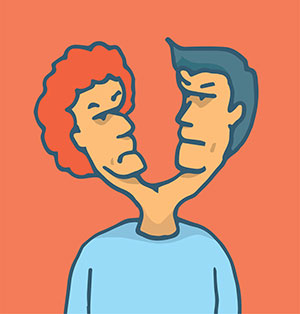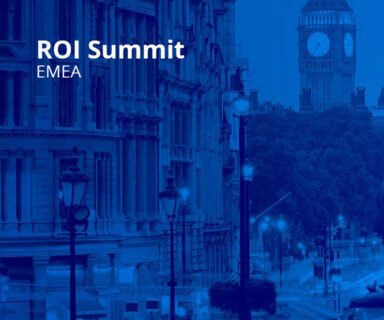One of the proud moments of my career happened when I was working overseas at an ad agency. One of our clients was a large natural gas distributor, which had just gotten into manufacturing and installing LPG (liquid propane gas) conversion kits for cars. LPG conversion was a big boom in that country since it was a lot cheaper than gasoline and converting a gasoline car to run on LPG was a very low budget task. Of course, guess who didn’t like that boom and wasn’t getting some? The big oil companies. They lobbied against the LPG conversion; falsely claiming that LPG is very explosive and succeeded in convincing the government to put a ban on vehicle LPG conversion.
Our client asked us to come up with a marketing campaign to fight this ban. But how would you fight against the biggest lobby in the world, and convince not only people, but also influence the government to reverse their decision? My suggestion was to expose the lie that caused the ban, tell public the truth about LPG, it’s economical and environmental benefits, support those claims with data (success stories from other developed countries) and hit the target with an emotional, “We owe our kids the future!” slogan.
While it was our client who originally requested the ad campaign, other local natural gas distribution companies decided to support it as well, and now, not only did we have a good message, we had the industry backing it too. Within a month, the parliament lifted the ban thanks to the pressure from the newly educated public. By the way, did I mention that I’m a graphic designer?
Wait – a graphic designer is also a marketer? I’d like to see some credentials
By trade, graphic design is an integral part of marketing and advertising. In addition to knowing how to successfully convey a message visually, our graphic design curriculum in art school included how to think like a marketer, to come up with campaign ideas, slogans, and marketing message; and we are all much too familiar with the marketing terms such as target audience, focus groups, demographics, etc. So when we designed a marketing piece, we not only paid attention to the typography, color theory, and visual composition, we also paid attention to what the message said. Our career generally included a path where we worked in small ad agencies, which didn’t have a dedicated marketer and assumed that role or worked as freelance graphic designers where we had no other option.
I sense that you are looking at your graphic designer now and wondering if he or she ever worked on a great campaign like the LPG campaign, which resulted in changing the politics of a nation and it’s environment. Not every graphic designer has such opportunities in their career, but one way or another, they are involved in the process where they contributed to a successful campaign more than just bringing their artistic talents to the table. So, have a conversation with your graphic designer(s), include them in designing the marketing campaign, rather than just designing the marketing piece. A graphic designer is not just a person who makes things nice, but he or she can also make it meaningful, relevant and marketable.
4 ways your marketing can benefit from graphic design expertise
- Gathering as much information as possible about the audience we are designing the marketing piece for. Only in very rare cases the audience is everybody. It is focused to a specific group of people and knowing their common interests, demographics, culture, etc. helps us to be able to visualize the theme around the marketing efforts.
- Taking a jumble of marketing messages and make sense of it for the viewer so it’s digestible in the right order.
 Developing a concept that resonates. When I say “Uncle Sam,” the image that comes to your mind is a very specific one, even though there is a possibility that you actually have an uncle whose name is Sam.
Developing a concept that resonates. When I say “Uncle Sam,” the image that comes to your mind is a very specific one, even though there is a possibility that you actually have an uncle whose name is Sam.- Crafting the right message/visual combination. Exploring the campaign above, imagine if the same poster had Marilyn Monroe winking with the slogan “I want you” . It probably would have received a lot of attention, but not for the right reason.
Take advantage of collaborating with a graphic designer
Together, graphic design and marketing are all about communicating a message. The success of that message reaching to the right audience, through the right media and with the right presentation depends on both parties collaborating. Such success requires a good communication between the marketer and the designer. When soliciting a designers help, make sure to explain the clear goals of the campaign, what problem you are trying to solve –if there is any, who your audience is, and ask them for their expertise on how to achieve your marketing goal. This way, you will find the graphic designer being a motivated business partner on your side rather than a technician who knows how to use graphic software. Let’s not forget that it is only to a company’s benefit to include and collaborate with all their stakeholders.
If you are interested in discussing how graphic design can help marketing in more length, please feel free to leave a comment or connect with me on LinkedIn.

 Developing a concept that resonates. When I say “Uncle Sam,” the image that comes to your mind is a very specific one, even though there is a possibility that you actually have an uncle whose name is Sam.
Developing a concept that resonates. When I say “Uncle Sam,” the image that comes to your mind is a very specific one, even though there is a possibility that you actually have an uncle whose name is Sam.


